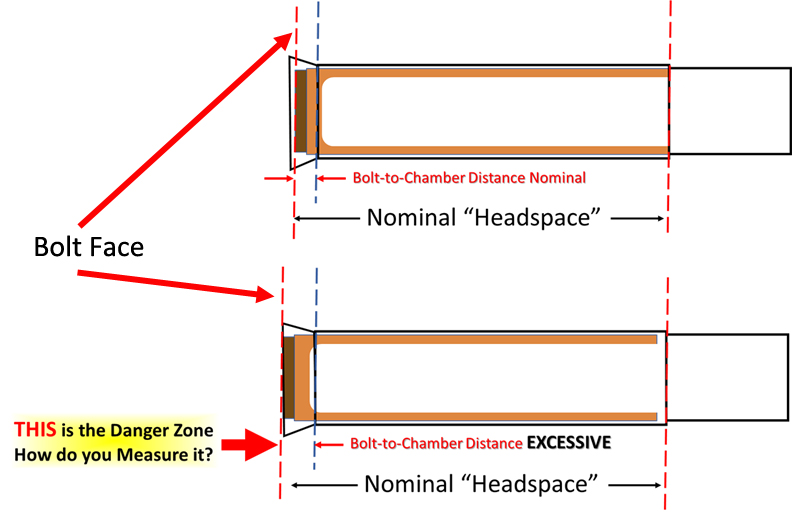In the case of my kaboom, the slack in headspace was enough that the top of the web of the case was unsupported and that is how the catastrophic failure was initiated
We are going off topic here. OP,this will have nothing to do with your situation.
Stagpanther, I was not there for your kaboom. I'm speculating and I may be wrong.
A case failure MIGHT have to do with headspace, but it might not. I take it you were in on the early stages of the Legend.
I have zero experience with the cartridge.
Its fairly common for a rifle to be designed that does not fully support the cartridge case. An example would be any cone breech rifle such as The 1903 Springfield and M-70 Winchester.
The cartridge casehead is designed to provide adequate strength to compensate for the lack of chamber support. We are talking about the area between the breech face and chamber mouth. We have to be careful where the chamber support starts. This applies to doing Dremel work on the feed ramps of semi-auto handguns,too.
Was this in an AR type rifle?Perhaps in the course of designing the barrel extension, bolt, bolt face ,breech end of the barrel, and how that all works together someone screwed up in the design or execution(machining) .
All of those can occur whether headspace or headspace gauges are perfect to a few thousandths.
Remember the Go/No go are important to building a new chamber to work within our standards, But the gun is not red tagged out of service till it accepts the field gauge. A gun can pretty grossly be out of "No Go' spec and still be considered safe to use.
I'd expect a headspace kaboom to fail a field gauge check,
Its hard for me to imagine a variance in spec between headspace gauge manufacturers would be great enough to blow up a gun. Methinks there is more to this story.
Not that I need to know it. If I had a mongrel mix of Clymer, Manson, PTG,etc headspace gauges (I don't)I'd use them with confidence. If they disagree .001 its not going to blow up a gun. Remember,a gun that passes field is safe to use.
For a Mauser type rifle,(trued up) if I depth mic receiver ring to breech face,
Then depth mic barrel stub end to shoulder that contacts the breech face,
I can make a sketch and figure out how much my headspace gauge should protrude from the chamber. I can measure that,too.
All that tells me when I have .001 or .003 left to go by hand as I use the bolt and Go guage to establish the minimum chamber I generally cut. I use the No Go to verify, but the bolt does not close on the no go. Its just not that hard to control if you take your time and don't cut corners.
I handload to a target of .002 head clearance in a bolt gun. .004 to .006 in a Garand.It works for me.



